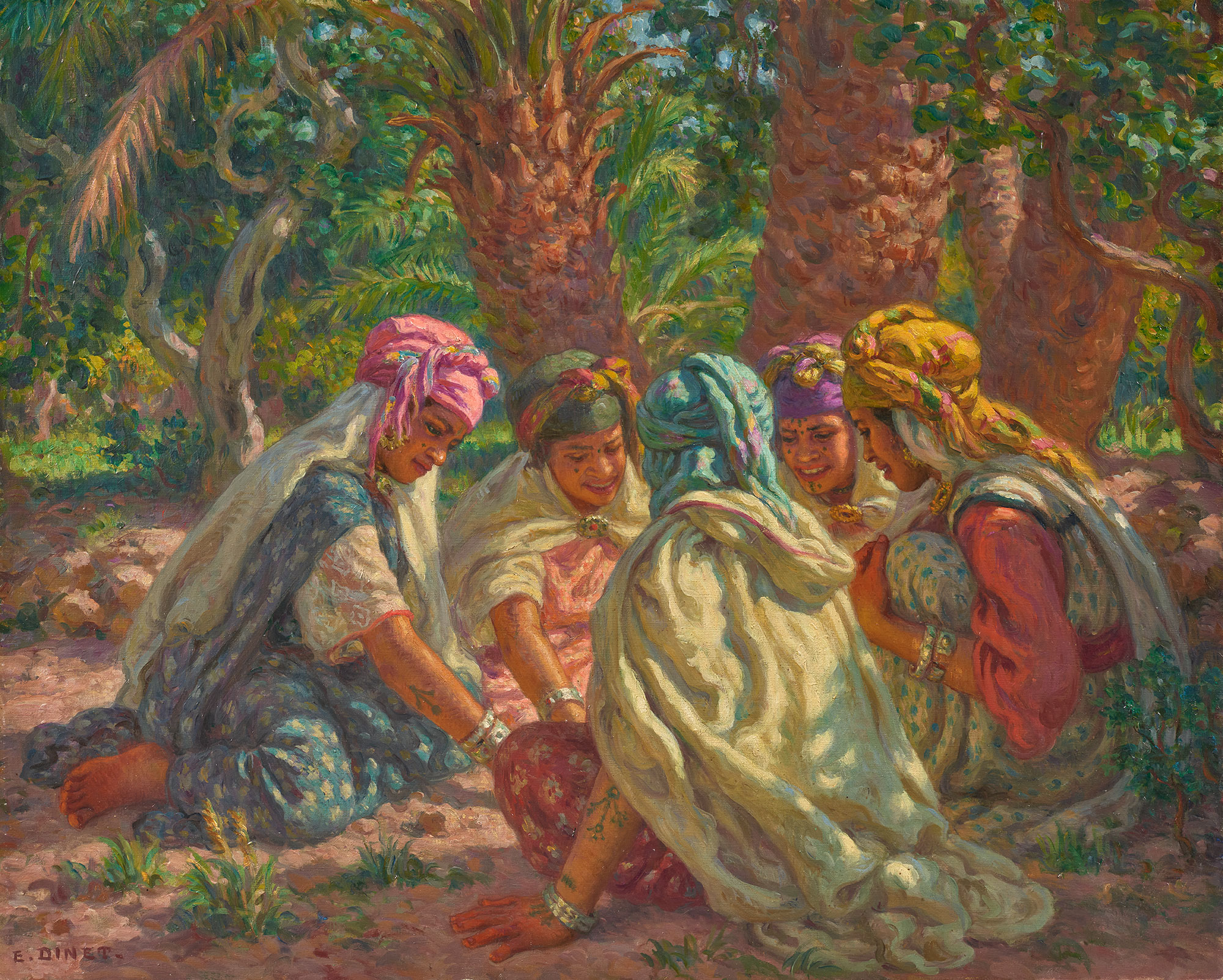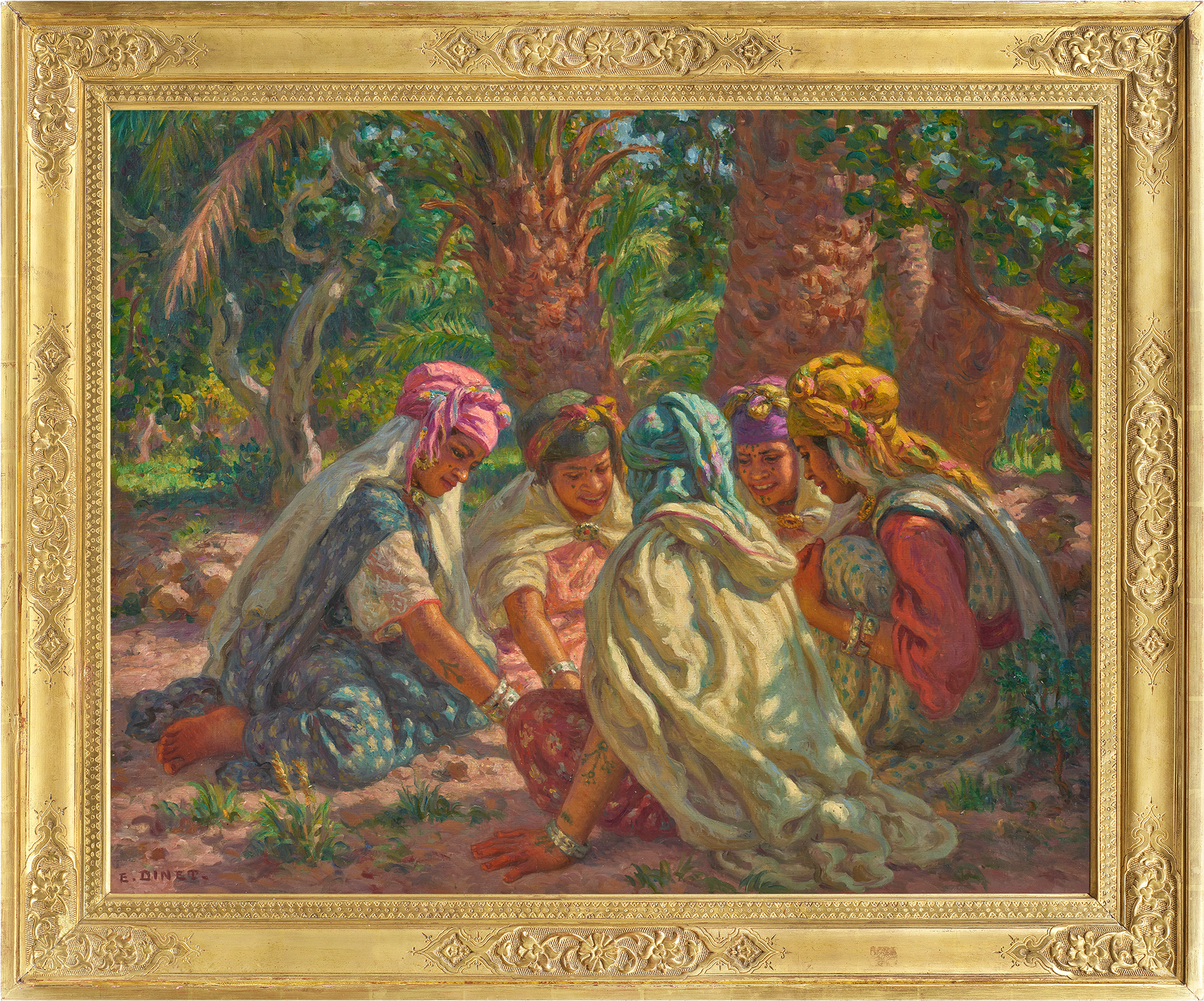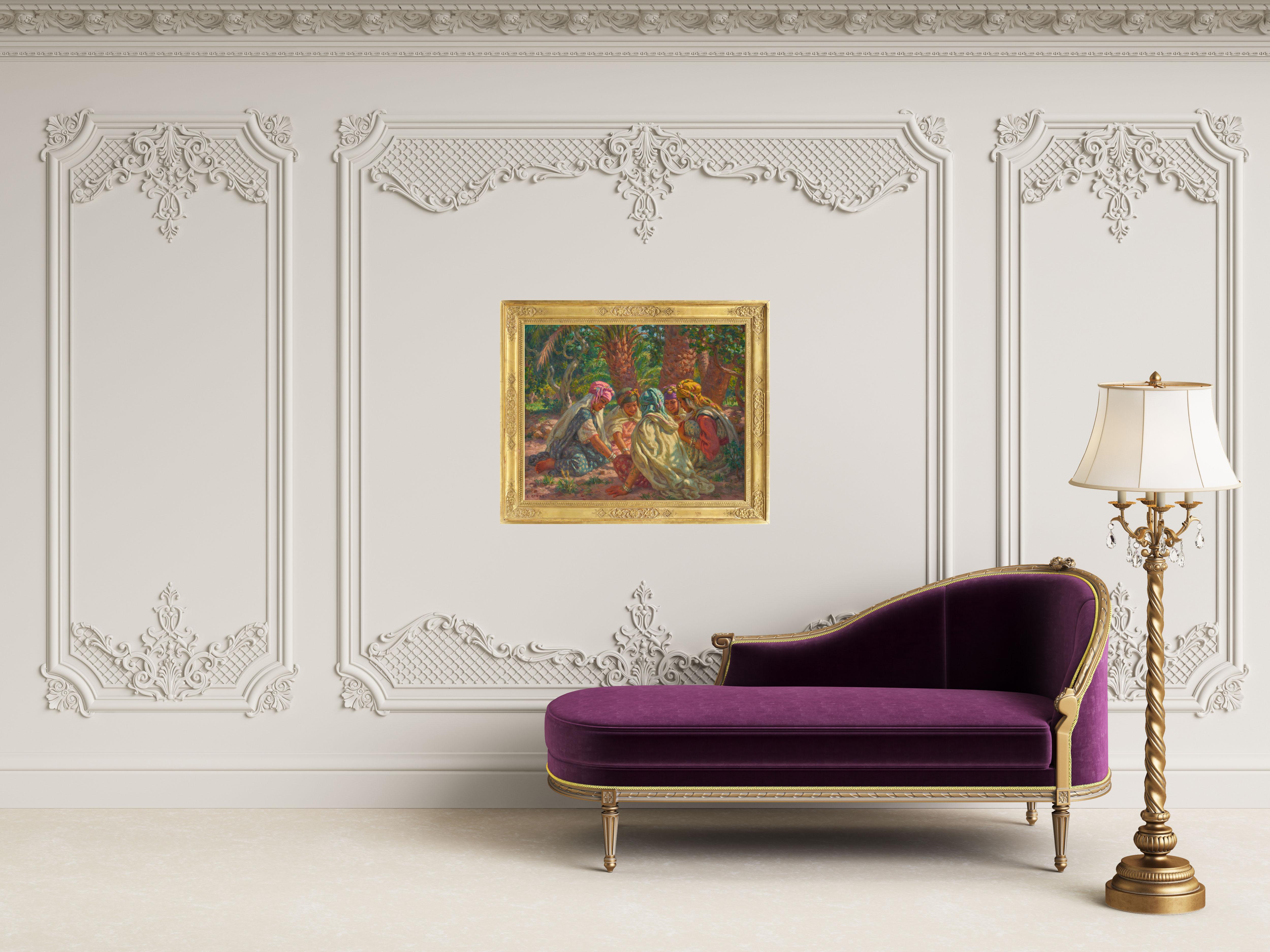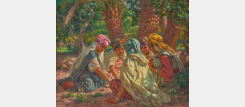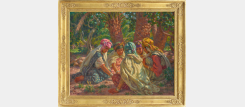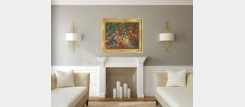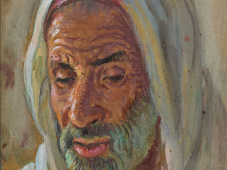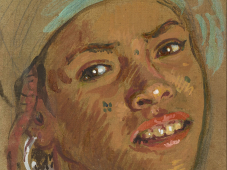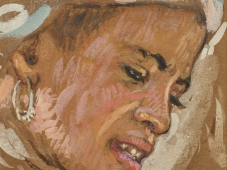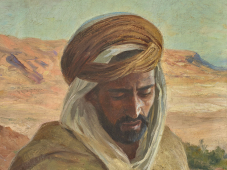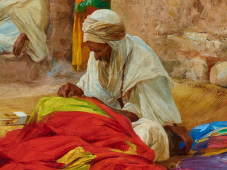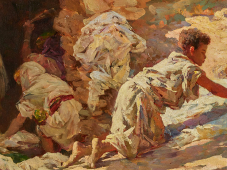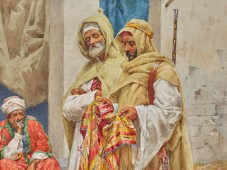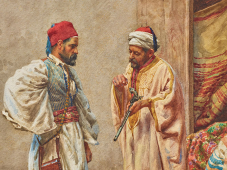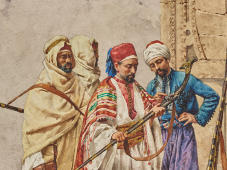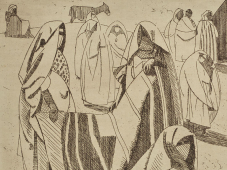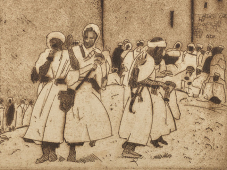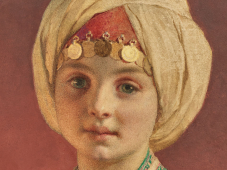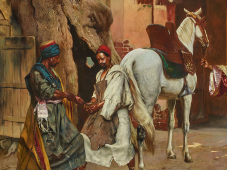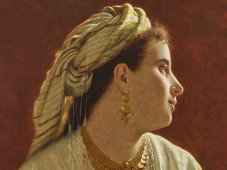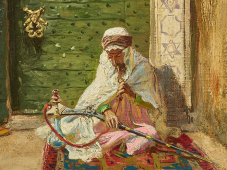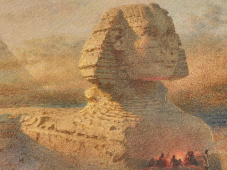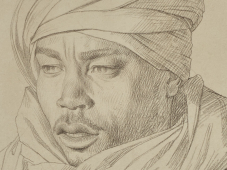Girls playing in the palm grove
Description of the artwork
From 1885 onwards, Etienne Dinet's life and work took a new turn, as he spent time in Algeria, until he finally settled in Bou-Saâda - whose name means “City of Happiness” - in 1904. During these years of discovering and learning Arabic culture and language, Etienne Dinet explored a wide range of themes and subjects, but his main concern was to describe, with immense respect, the daily life of those who welcomed him. The sun of the Orient overwhelmed the young painter and lit up his palette with a thousand fires.
In our painting, five young girls sit in a circle in a palm grove. In the shade of lush vegetation, they share a moment of complicity and relaxation. Their faces are joyful and their gazes focused on the game that brings them together. As part of their Berber culture, the young women proudly wear traditional tattoos made with charcoal- and mineral-based inks that embellish their bodies and mark their belonging to a tribe or family. In Berber custom, tattoos were also believed to have magical powers, capable of curing physical and psychological ailments, with each symbol having a precise meaning.
Dinet created this painting around 1890-1900. The paintings of this period are hymns to the new life the young painter was about to embrace. The palm grove, a fascinating oasis of greenery in a desert environment, is a land of welcome, a source of life for those living nearby. The painter uses bright, acid colors to accentuate the joyful aspect of the scene he is observing, the play of light and shadow echoing the girls' play.
In the midst of this vegetation, the shimmering colors of the scarves stand out, catching the sun's rays as they filter through the foliage. The young girls have the coquettishness of their youth. Exquisitely groomed, they wear their silver jewelry, fibulas, bracelets and earrings with simplicity. The harmony of the moment is total, and the palm grove appears as a protective case for the young girls. This painting is the touching testimony of an artist fully integrated into the culture of the country that welcomed him, Étienne Dinet converting to Islam a few years later.
Literature
K. Benchikou, Semaine de l'émigration, 1984, no. 86, p. 12, illustrated.
Denise Brahimi & Koudir Benchikou, La Vie et l'œuvre de Etienne Dinet, Paris, 1991, no. 197, pp. 60 & 206, illustrated.
75008 Paris, France
Saturdays from 2 to 7 p.m.



